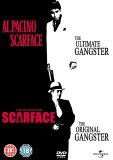 Scarface | DVD | (09/10/2006)
from £N/A
| Saving you £N/A (N/A%)
| RRP
Scarface | DVD | (09/10/2006)
from £N/A
| Saving you £N/A (N/A%)
| RRP Scarface (Dir. Howard Hawks 1932): Generally regarded to be the best - and most brutal - of the classic gangster films the original Scarface tells the story of orginised crime's pinch on the city of Chicago during prohibition. Paul Muni plays Tony Carmonte an ambitious hood with a Napoleonic urge to fight his way to number one gang boss. When the last of the old-style crime bosses is brutally slain down the finger is pointed at Tony and Johnny Loro a rival gangster. However Tony's desire to move up the ladder is about to put him in the firing line of his peers and the police. Produced and directed by the mercurial Howard Hawks Scarface is the movie which established both Paul Muri and his coin flipping aide George Raft as major Hollywood stars. Scarface (Dir. Brian De Palma 1983): Al Pacino gives an unforgettable performance as Tony Montana one of the most ruthless gangsters ever depicted on film in this gripping cult crime epic inspired by the 1932 classic of the same title. Scarface follows the violent career of a small-time Cuban refugee hoodlum who guns his way to the top of Miami's cocaine empire and makes some ruthless friends and enemies on the way to oblivion...
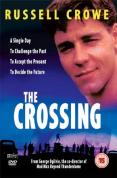 The Crossing | DVD | (25/06/2007)
from £7.20
| Saving you £-3.21 (N/A%)
| RRP
The Crossing | DVD | (25/06/2007)
from £7.20
| Saving you £-3.21 (N/A%)
| RRP Sam returns home after a lengthy absence to find his girlfriend is having an affair with his best friend. The two friends then end up in a drunken race where the question of who gets the girl will be decided at a train crossing...
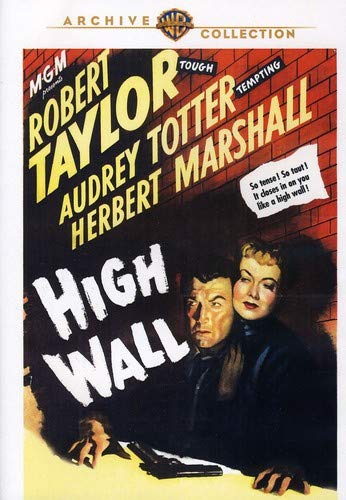 High Wall | DVD | (24/11/2010)
from £N/A
| Saving you £N/A (N/A%)
| RRP
High Wall | DVD | (24/11/2010)
from £N/A
| Saving you £N/A (N/A%)
| RRP ![A Simple Wish [DVD]](/pictures/1142123.jpg) A Simple Wish | DVD | (29/08/2016)
from £5.97
| Saving you £2.16 (36.18%)
| RRP
A Simple Wish | DVD | (29/08/2016)
from £5.97
| Saving you £2.16 (36.18%)
| RRP When Anabel (MARA WILSON) wished for a fairy-godmother, she never dreamed his name would be Murray (MARTIN SHORT)! Before you can say SHABOOM!, Anabel quickly learns that Murray is short on experience and long on excuses. As they are whisked into a hilarious whirlwind of magical mishaps, Anabel and the blundering Murray have until midnight to rescue her dad, battle a wicked witch (KATHLEEN TURNER) and recover stolen magic wands to restore the world to a place where wishes really can come true!
![Winston Churchill - The Wilderness Years [1981]](/pictures/1020041.jpg) Winston Churchill - The Wilderness Years | DVD | (03/12/2001)
from £N/A
| Saving you £N/A (N/A%)
| RRP
Winston Churchill - The Wilderness Years | DVD | (03/12/2001)
from £N/A
| Saving you £N/A (N/A%)
| RRP It's easy to forget that, though fronting the British war effort through most of World War Two, Winston Churchill had spent the previous decade isolated in Parliament and in an internal opposition to the Conservative party. Winston Churchill: The Wilderness Years dramatises this period, in which the growing menace of Nazism in Germany was met with indifference, even fear by governments of the day who were more concerned with their survival than in serving those who had elected them. Churchill is perceptively played by Robert Hardy who confirms the image without falling into caricature. Visionary and obstinate by turns, he galvanises his supporters and enrages his enemies with a passion borne of conviction. A seasoned British cast includes Peter Barkworth as the amiable but ineffectual Stanley Baldwin, Eric Porter as the truly "out of time" Neville Chamberlain, Edward Woodward as the scheming Samuel Hoare, and Nigel Havers as the tragically flawed Randolph Churchill. Martin Gilbert has done a persuasive job transforming his novel into a TV script, the scenes in the House of Commons having a gritty reality that makes compulsive viewing. On the DVD: It's a pity that the Southern Pictures production first screened in 1981 has emerged so dimly in this incarnation. Has the master tape eroded so badly, or was it simply not available? However, it's worth putting up with the technical defects to enjoy this historically informed and grippingly dramatic serial. --Richard Whitehouse
![Raiders Of The Living Dead [1986]](/pictures/1022273.jpg) Raiders Of The Living Dead | DVD | (14/07/2003)
from £N/A
| Saving you £N/A (N/A%)
| RRP
Raiders Of The Living Dead | DVD | (14/07/2003)
from £N/A
| Saving you £N/A (N/A%)
| RRP A newspaper reporter hears of strange goings-on on a remote island. He travels there and finds a mad scientist creating zombies...
 Hornblower Vol.1 | DVD | (15/07/2002)
from £N/A
| Saving you £N/A (N/A%)
| RRP
Hornblower Vol.1 | DVD | (15/07/2002)
from £N/A
| Saving you £N/A (N/A%)
| RRP ![Folks! [1992]](/pictures/1014520.jpg) Folks! | DVD | (07/06/2004)
from £N/A
| Saving you £N/A (N/A%)
| RRP
Folks! | DVD | (07/06/2004)
from £N/A
| Saving you £N/A (N/A%)
| RRP Jon Aldrich an all around nice guy inadvertently becomes the target of an FBI sting. But compared to everything else in his life that doesn't seem so bad.
![Crazy In Alabama [1999]](/pictures/1015045.jpg) Crazy In Alabama | DVD | (17/08/2009)
from £7.79
| Saving you £5.20 (40.00%)
| RRP
Crazy In Alabama | DVD | (17/08/2009)
from £7.79
| Saving you £5.20 (40.00%)
| RRP It's clear why Melanie Griffith saw Mark Childress's bestselling book Crazy in Alabama, as the perfect vehicle for herself. The role of Lucille, a beautiful, battered wife in rural Alabama who dreams of glamorous movie stardom, is tailor-made for her. Griffith's husband, Antonio Banderas, has done quite a respectable job guiding her in this, his directorial debut; her performance--compelling, funny, and warm--is her best since Something Wild. (She also looks simply smashing.) Otherwise, the film is a curious amalgam of genres: an antic, surreal Southern Gothic comedy combined with a deadly serious civil-rights parable. As the movie opens, in the summer of 1965, Lucille (Griffith) has just murdered her abusive husband and is blowing town for Hollywood with his head in a Tupperware container. Scenes of her wacky cross-country road trip are interspersed with incidents back in Alabama involving clashes between protesting blacks and murderously intolerant whites. One can't imagine how these two seemingly disparate narrative lines will come together, but they do, in a surprisingly effective manner. The moral of both stories turns out to be: "You can bury freedom, but you can't kill it". Stand-out performances by Robert Wagner, as Lucille's Hollywood agent; Rod Steiger, as a quirky Southern judge; Lucas Black (Sling Blade) as Lucille's highly principled young nephew; and, believe it or not, Meat Loaf, as a brutal, bigoted Southern sheriff give the film an additional boost. --Laura Mirsky
![Me And Will [1998]](/pictures/1015372.jpg) Me And Will | DVD | (24/03/2003)
from £9.99
| Saving you £-4.00 (N/A%)
| RRP
Me And Will | DVD | (24/03/2003)
from £9.99
| Saving you £-4.00 (N/A%)
| RRP Nobody Rides For Free. A classic journey of two L.A. women who break out of rehab and take to the American highway in search of the legendary chopper ridden by Peter Fonda in ""Easy Rider."" Their journey becomes a quest of self-discovery and rebirth and a test of their resolve and friendship.
![The Twilight Zone - Vol. 1 [1963]](/pictures/1013284.jpg) The Twilight Zone - Vol. 1 | DVD | (26/05/2000)
from £N/A
| Saving you £N/A (N/A%)
| RRP
The Twilight Zone - Vol. 1 | DVD | (26/05/2000)
from £N/A
| Saving you £N/A (N/A%)
| RRP In 1959 screenwriter Rod Serling first opened the door to the "dimension of imagination" that is The Twilight Zone, a show quite unlike anything that had gone before, and better than much that has followed in its wake. This original and daring television series ran for a magnificent five seasons from 1959 to 1964 and still looks as fresh as ever, particularly on DVD. What distinguished the series (and still does) is the quality of the scripts, many of which were penned by Serling, but with significant contributions from veteran sci-fi authors and screenwriters such as Richard Matheson. Actors of the calibre of Robert Redford, Burgess Meredith, Lee Marvin and William Shatner gave some of their best small-screen performances, while an unforgettable main title theme by Bernard Herrmann and musical contributions from young turks such as Jerry Goldsmith underlined the show's attraction for great creative talent both behind and in front of the cameras.What's immediately apparent on watching Volume 1 is the quality of the scripts, proving that great writing is timeless. Of the three episodes on this first disc, the screenplays are by Serling himself (episode 47, "Night of the Meek"), Richard Matheson (episode 51, "The Invaders") and Zone regular George Clayton Johnson (episode 81, "Nothing in the Dark"). The acting does full justice to the writers' high standards. Art Carney as the alcoholic department store Santa Claus in "Night of the Meek" provides a theatre-sized one-man masterclass, his close-up performance conveying all the character's desperation then new-found joy. Veteran Agnes Moorehead (who made her screen debut as Charles Foster Kane's mother in Citizen Kane) faces an unusual challenge in Matheson's almost entirely wordless "The Invaders", in which she plays a frightened old woman who is attacked by tiny aliens (when the mystified Moorehead first read the script, which had no dialogue for her at all, she asked "Where's my part?"). In the claustrophobic two-hander "Nothing in the Dark", a fresh-faced Robert Redford is more than usually charming as Gladys Cooper's unwanted visitor who might or might not be Death himself.On the DVD: A neat animated menu with a winking eye guides the viewer "Inside the Twilight Zone", which consists of digests of background information on the individual episodes, as well as a general history of the show, season-by-season breakdown and a potted biography of Serling. --Mark Walker
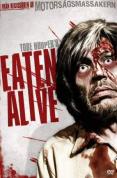 Eaten Alive | DVD | (18/02/2008)
from £N/A
| Saving you £N/A (N/A%)
| RRP
Eaten Alive | DVD | (18/02/2008)
from £N/A
| Saving you £N/A (N/A%)
| RRP If you are a fan of Tobe Hooper's classic film The Texas Chainsaw Massacre then you are in for a treat. This was Hooper's follow-up film to Chainsaw. In fact it features the same damsel-in-distress Marilyn Burns and was co-written by Chainsaw collaborator Kim Henkel. An Academy of Science Fiction and Horror nominee Eaten Alive is a very disturbing movie and features some of the most truly horrific scenes ever filmed. Judd (Neville Brand) is the owner of a dilapidated motel buried deep in the bayou that caters to strangers passing through. Unfortunately for the guests he also caters to his pet alligator's veracious appetite. Eaten Alive also features a very early performance by Robert Englund (Elm Street's Freddy Krueger)
![Gone in 60 Seconds [UMD Universal Media Disc]](/pictures/1036231.jpg) Gone in 60 Seconds | UMD | (03/10/2005)
from £N/A
| Saving you £N/A (N/A%)
| RRP
Gone in 60 Seconds | UMD | (03/10/2005)
from £N/A
| Saving you £N/A (N/A%)
| RRP ![It's The Rage [2000]](/pictures/1013964.jpg) It's The Rage | DVD | (07/02/2005)
from £3.29
| Saving you £2.70 (82.07%)
| RRP
It's The Rage | DVD | (07/02/2005)
from £3.29
| Saving you £2.70 (82.07%)
| RRP Mixing a superb cast with a serious salting of dark humour "gun culture" comedy It's The Rage is that rare thing, a genuinely outstanding film which went straight-to-video. Like Magnolia (1999) it makes coincidence a virtue in telling the stories of a group of disparate characters, and how their lives are entwined and sometimes ended because of America's obsession with firearms. When Jeff Daniels shoots his business partner, his wife, Joan Allen, leaves for a job with a software billionaire, Gary Sinise, and the film expands to encompass brother and sister punks (Giovanni Ribisi and Anna Paquin), a video store assistant, a pair of detectives and a gay couple. Adapted from his own play, Keith Reddin ensures the script remains pointed, while Sinise delivers a wonderful performance of supreme eccentricity recalling Peter Seller's Dr Strangelove. Indeed, there is much akin to Kubrick's tense, pitch-black humour in this anti-gun parable, while in various ways, from the central Daniels/Allen couple to the sardonic detachment of the music to Paquin's "almost-relationship" with an older man It's the Rage parallels the contemporaneous American Beauty (1999). It's actually the more powerful film, and though made for cable deserved all the praise it received on its festival screenings. On the DVD: The trailer doesn't capture the spirit of the film at all, while the 13-minute making-of documentary is routine promotional material. The commentary by first time film director (but veteran stage director) James D. Stern is exceptionally good, both enthusiastic and packed with information; the fact that It's The Rage really bites can almost certainly be attributed to Stern's college roommate being shot dead. The sound is Dolby Digital 5.1 and while this isn't the sort of film to show-off a sound system,it's atmospheric and the diverse music score becomes almost a character in itself. The anamorphically enhanced 1.77-1 image is good but a little grainy and shows occasional compression artifacting. --Gary S Dalkin
![Arizona Colt - Mediabook - Cover A (+ DVD) [Blu-ray]](/pictures/1161472.jpg) Arizona Colt - Mediabook - Cover A (+ DVD) | Blu Ray | (10/11/2022)
from £N/A
| Saving you £N/A (N/A%)
| RRP
Arizona Colt - Mediabook - Cover A (+ DVD) | Blu Ray | (10/11/2022)
from £N/A
| Saving you £N/A (N/A%)
| RRP  Rehearsal For Murder | DVD | (01/09/2003)
from £N/A
| Saving you £N/A (N/A%)
| RRP
Rehearsal For Murder | DVD | (01/09/2003)
from £N/A
| Saving you £N/A (N/A%)
| RRP ![Longest Day, The / Tora! Tora! Tora! [1962]](/pictures/1000354.jpg) Longest Day, The / Tora! Tora! Tora! | DVD | (31/05/2005)
from £N/A
| Saving you £N/A (N/A%)
| RRP
Longest Day, The / Tora! Tora! Tora! | DVD | (31/05/2005)
from £N/A
| Saving you £N/A (N/A%)
| RRP The Longest Day: On June 6 1944 the Allied Invasion of France marked the beginning of the end of Nazi domination over Europe. The attack involved 3 000 000 men 11 000 planes and 4 000 ships comprising the largest armada the world has ever seen. Presented in its original black & white version 'The Longest Day' is a vivid hour-by-hour re-creation of this historic event. Featuring a stellar international cast and told from the perspectives of both sides it is a fascinati
 Hellsing - Vol. 2 - Episodes 4-6 | DVD | (22/09/2003)
from £N/A
| Saving you £N/A (N/A%)
| RRP
Hellsing - Vol. 2 - Episodes 4-6 | DVD | (22/09/2003)
from £N/A
| Saving you £N/A (N/A%)
| RRP Arucard and the Hellsing organisation face a twofold challenge! A traitor within begins leaking classified information and a TV journalist is out to expose Hellsing's secret mission! Episodes include: Innocent As A Human Brotherhood and Dead Zone.
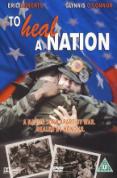 To Heal A Nation | DVD | (01/05/2006)
from £N/A
| Saving you £N/A (N/A%)
| RRP
To Heal A Nation | DVD | (01/05/2006)
from £N/A
| Saving you £N/A (N/A%)
| RRP When Jan Scruggs return home from the Vietnam War he feels alienated from the world he left only two short years ago Jan only feels comfortable when he is in the company of someone with whom he shares a common bond - another Vietnam veteran.Jan forms an ideal to heal the wounds of a nation split apart by war; and at a veterans' meeting suggests a memorial to those who fought in Vietnam. Jan's idea is met with angry disapproval and so he takes on the memorial as his personal goal determined to honour those who served.
![Tenet (UHD/ BD) [Blu-ray] [2020] [Region Free]](/pictures/1162304.jpg) Tenet (UHD/ BD) | Blu Ray | (14/12/2020)
from £N/A
| Saving you £N/A (N/A%)
| RRP
Tenet (UHD/ BD) | Blu Ray | (14/12/2020)
from £N/A
| Saving you £N/A (N/A%)
| RRP Fighting for the survival of the entire world, the Protagonist journeys through a twilight world of international espionage on a mission that will unfold in something beyond real-time. Special Features Looking At The World In A New Way: The Making Of Tenet - An Exploration Of The Development And Production Of The Film As Told By The Cast And Crew. Looking At The World In A New Way: The Making Of Tenet: I. The Principle Of Belief - Christopher Nolan Talks About Why He Wanted To Make This Film And The Twists He Wanted To Bring To The Spy Genre. Looking At The World In A New Way: The Making Of Tenet: Ii. Mobilizing The Troupe - The Filmmakers To Talk About Casting And What The Actors Brought To Their Roles. Looking At The World In A New Way: The Making Of Tenet: Iii. The Approach - The Company Discusses How Nolan&Rsquo;S Filmmaking Philosophies And In-Camera Approach Applied To The Challenges In This Film. Looking At The World In A New Way: The Making Of Tenet: Iv. The Proving Window - A Look At The Cinematography And The Unique Ways They Shot The Movie. Looking At The World In A New Way: The Making Of Tenet: V. The Roadmap - Examining The Ways The Cast And Crew Kept Track Of The Continuity Across Multiple Perspectives And Timelines. Looking At The World In A New Way: The Making Of Tenet: Vi. Entropy In Action - Breaking Down The Complex Action In The Film And The Stunt Requirements For The Actors. Looking At The World In A New Way: The Making Of Tenet: Vii. Traversing The Globe - Exploring The Logistics Of Travelling And Shooting In Real Locations As Well As Capturing The Epic Marine Sequences In Different Countries Around The World. Looking At The World In A New Way: The Making Of Tenet: Viii. How Big A Plane? - The Story Of The Dramatic Crashing Of A Real 747. Looking At The World In A New Way: The Making Of Tenet: Ix. The Dress Code - Costume Designer Jeffrey Kurland Takes Us Through Some Of The Iconic Costumes From The Film. Looking At The World In A New Way: The Making Of Tenet: X. Constructing The Twilight World - A Look At The Practical Sets Designed And Built By Nathan Crowley & Team And The Techniques They Used To Enhance The Scope And Scale Of The Film. Looking At The World In A New Way: The Making Of Tenet: Xi. The Final Battle - Inside The Epic Sequence Which Had The Cast And Crew Using Everything That They Had Learned On The Film To Pull It Off. Looking At The World In A New Way: The Making Of Tenet: Xii. Cohesion - Nolan Discusses His Approach Of Involving The Composer And The Editor Early On In The Pre-Production And All The Way Through The Completion Of The Film To Truly Integrate Them Into The Creative Process. Looking At The World In A New Way: The Making Of Tenet: Xiii. Doesn't Us Being Here Now Mean It Never Happened? - The Cast And Crew Discuss The Unique Experience Of Working On The Film.

Please wait. Loading...
This site uses cookies.
More details in our privacy policy